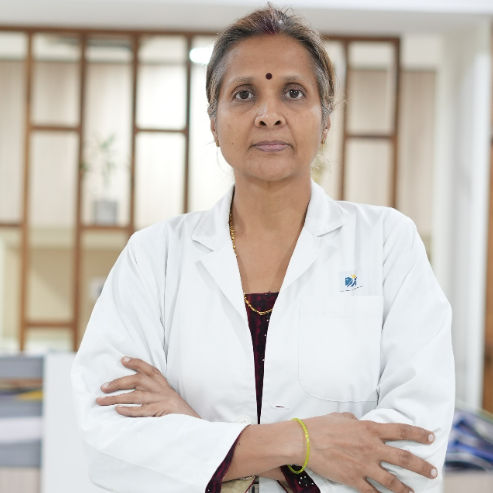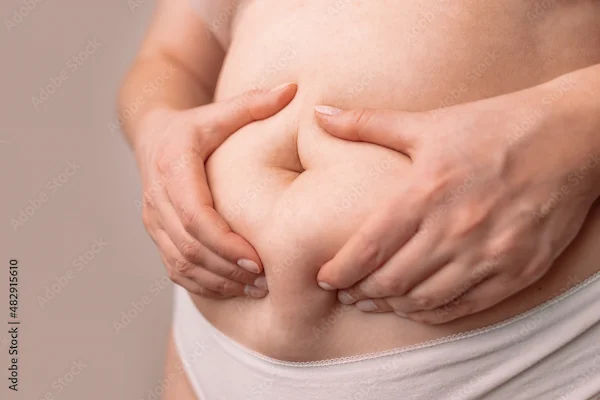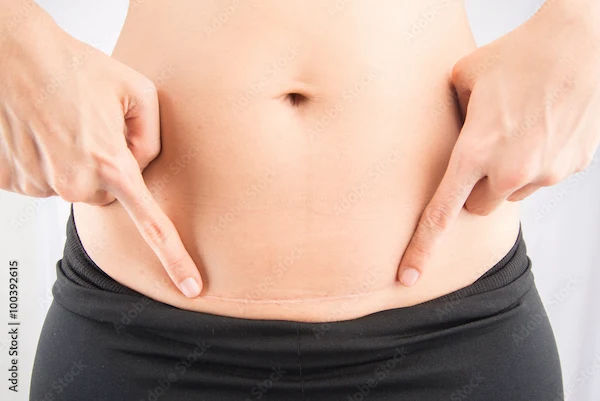How to Reduce Tummy After C-Section?
Learn how to reduce tummy after a C-section with safe, doctor-approved methods. Discover effective exercises, dietary tips, and recovery practices to support your postpartum journey.

Written by Dr. Sonia Bhatt
Last updated on 3rd Jul, 2025

Introduction
Welcoming a new baby into the world is a beautiful experience. But recovering from a C-section can be challenging, especially when it comes to losing the post-pregnancy belly. Many new mothers wonder how to safely and effectively reduce their tummy after a C-section. With patience, the right approach, and a little self-care, you can regain your shape while prioritising your health.
Understanding the Post-C-Section Belly
After a C-section, your body needs time to heal. The abdominal muscles and skin have been stretched during pregnancy, and the surgery adds extra recovery time. Here’s why the tummy may still appear larger:
Swelling (Oedema): Fluid retention and swelling are common after surgery.
Stretched Abdominal Muscles (Diastasis Recti): The separation of abdominal muscles during pregnancy may take time to close.
Uterus Shrinkage: The uterus takes about 6-8 weeks to return to its pre-pregnancy size.
Fat Deposits: Extra fat stored during pregnancy may remain if not addressed through diet and exercise.
It’s important to wait until your doctor gives you the approval—usually around 6-8 weeks postpartum—before starting any exercise or diet plan. Rushing into intense workouts can delay healing or cause complications.
Consult Top Specialists for Your Condition
Safe and Effective Ways to Reduce Tummy After C-Section
Here are carefully selected strategies to help you approach postpartum belly reduction safely:
1. Gentle Walking
Start with short, slow walks as soon as your doctor permits. Gradually increase duration and pace to improve circulation and aid recovery.
2. Pelvic Floor & Core Strengthening Exercises
Engage in exercises designed to rebuild core and pelvic strength:
Kegel exercises to strengthen pelvic muscles.
Deep breathing and gentle abdominal contractions to engage core muscles without strain.
Postpartum-friendly yoga or Pilates focusing on gentle movements to support core strength.
3. Healthy Eating Habits
Support recovery and gradual fat loss:
Stay Hydrated: Helps with digestion and reduces bloating.
High-Protein Diet: Supports muscle repair and keeps you full longer.
Fibre-Rich Foods: Prevents constipation, which is common post-C-section.
Avoid Processed Foods & Sugars: These can contribute to bloating and weight retention.
4. Breastfeeding (If Possible)
Breastfeeding can naturally burn 300–500 extra calories daily and also encourages uterine contraction.
5. Waist Wrapping (Consult Your Doctor First)
Some women find gentle belly binding helpful for support but avoid tight compression that restricts healing.
6. Posture Correction
Maintaining good posture engages the core and prevents the belly from appearing more prominent. Stand tall to engage core muscles. Avoid slouching, which can make the belly appear more prominent, especially when feeding or holding the baby.
7. Patience & Self-Compassion
Understand that postpartum recovery is a gradual process. It may take six to twelve months to see significant changes, and that timeline is entirely normal.
8. What to Avoid
Protect your recovery and avoid setbacks:
High-Impact Exercises Too Soon: Running, crunches or heavy lifting can strain the incision.
Extreme Dieting: Your body needs nutrients for recovery and breastfeeding.
Comparing Yourself to Others: Every postpartum recovery journey is different.
When to Consult a Doctor
Seek medical advice if you experience:
Severe pain or swelling
Signs of infection like redness, pus, fever
Difficulty losing weight despite healthy efforts
If you’re unsure about the right exercises or diet plan, consult a physiotherapist or nutritionist specialising in postpartum care. You can book a consultation with experts on Apollo 24|7 for safe and effective recovery advice.
Final Thoughts
Reducing tummy fat after a C-section requires time, gentle effort, and self-care. Focus on healing first, then gradually incorporate healthy habits. Remember, your body has done something incredible. Celebrate it while working towards your goals at a safe pace.
For personalised postpartum fitness and nutrition plans, book a consultation today on Apollo 24|7.
Consult Top Gynaecologists
Consult Top Gynaecologists

Dr. Karuna Ratwani
Obstetrician and Gynaecologist
11 Years • MBBS, MS( Obstetrics & Gynaecology), F.MAS, FICRS Advanced Diploma in Minimal Access surgery Fellow of International College of Robotic Surgeons Diploma in Reproductive Medicine, Kiel-Germany Masters in Cosmetic Gynaecology , Greifswald-Germany Masterclass in Obstetrics & Gynaecology Ultrasound ( ISUOG, UK)
Delhi
Apollo Hospitals Indraprastha, Delhi
(25+ Patients)

Dr. Swarnakumari C
Obstetrician and Gynaecologist
40 Years • MD., DGO., DA. FACS. FICOG
Chennai
Apollo Women Hospitals Thousand Lights, Chennai
(75+ Patients)

Dr Shravya Manohar
Obstetrician and Gynaecologist
9 Years • MB,MS OBGYN ,MRCOG (Lon),FMAS
Chennai
Apollo Women Hospitals Thousand Lights, Chennai
(25+ Patients)

Dr Bhawna Garg
Gynaecological Oncologist
26 Years • MBBS, MS, (PGI MS ROHTAK) FELLOWSHIP GYNECOLOGY ONCOLOGY, (CANCER INSTITUTE CHENNAI)
Delhi
Apollo Hospitals Indraprastha, Delhi

Dr. Preeti Bhadauria
Obstetrician and Gynaecologist
15 Years • MBBS,MS (OBS & GYNAE)
Bhopal
Apollo Sage Hospitals, Bhopal
Consult Top Specialists for Your Condition

Dr. Karuna Ratwani
Obstetrician and Gynaecologist
11 Years • MBBS, MS( Obstetrics & Gynaecology), F.MAS, FICRS Advanced Diploma in Minimal Access surgery Fellow of International College of Robotic Surgeons Diploma in Reproductive Medicine, Kiel-Germany Masters in Cosmetic Gynaecology , Greifswald-Germany Masterclass in Obstetrics & Gynaecology Ultrasound ( ISUOG, UK)
Delhi
Apollo Hospitals Indraprastha, Delhi
(25+ Patients)

Dr. Swarnakumari C
Obstetrician and Gynaecologist
40 Years • MD., DGO., DA. FACS. FICOG
Chennai
Apollo Women Hospitals Thousand Lights, Chennai
(75+ Patients)

Dr Shravya Manohar
Obstetrician and Gynaecologist
9 Years • MB,MS OBGYN ,MRCOG (Lon),FMAS
Chennai
Apollo Women Hospitals Thousand Lights, Chennai
(25+ Patients)

Dr Bhawna Garg
Gynaecological Oncologist
26 Years • MBBS, MS, (PGI MS ROHTAK) FELLOWSHIP GYNECOLOGY ONCOLOGY, (CANCER INSTITUTE CHENNAI)
Delhi
Apollo Hospitals Indraprastha, Delhi

Dr. Preeti Bhadauria
Obstetrician and Gynaecologist
15 Years • MBBS,MS (OBS & GYNAE)
Bhopal
Apollo Sage Hospitals, Bhopal

